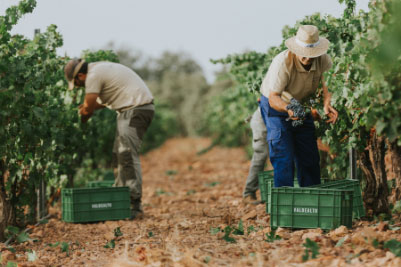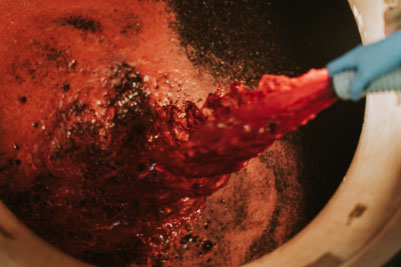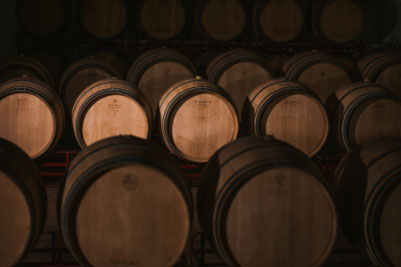Elaboration

1.
The plots are harvested separately to respect their uniqueness, and this is done in stages, as each one reaches the optimal moment of ripeness.
The manual harvest begins with a first selection of clusters in the vineyard, which are transported in 15 kilogram boxes to the winery.


2.
After the table selection and once destemmed, the grapes destined for red wines are transferred to tanks of different capacities where, after a pre-fermentative cold maceration, spontaneous alcoholic fermentation begins with indigenous yeasts.
3.
The aging takes place in barrels and foudres of different sizes, mainly made of French oak and small quantities of American oak.
For white wines and rosé, the grapes are directly pressed after destemming.

Making

1.
The plots are harvested separately to respect their uniqueness, and this is done in stages, as each one reaches the optimal moment of ripeness.
The manual harvest begins with a first selection of clusters in the vineyard, which are transported in 15 kilogram boxes to the winery.

2.
After the table selection and once destemmed, the grapes destined for red wines are transferred to tanks of different capacities where, after a pre-fermentative cold maceration, spontaneous alcoholic fermentation begins with indigenous yeasts.

3.
The aging takes place in barrels and foudres of different sizes, mainly made of French oak and small quantities of American oak.
For white wines and rosé, the grapes are directly pressed after destemming.






